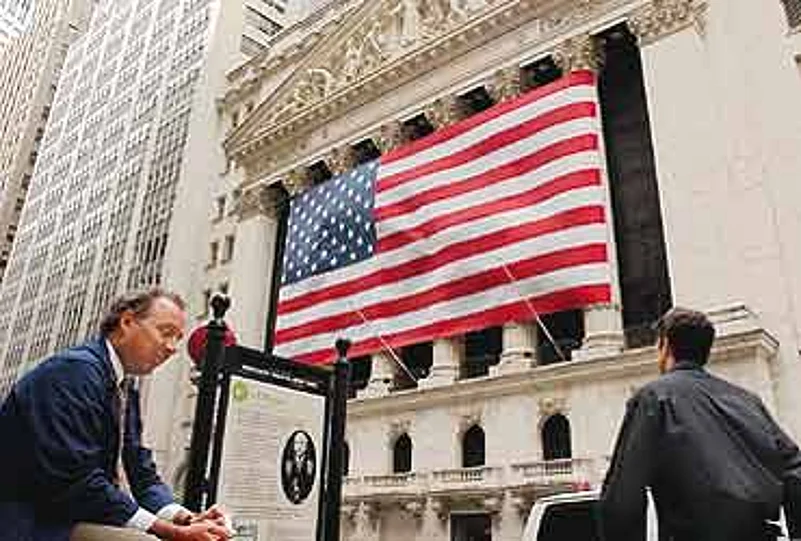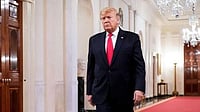So why were the Indian investors and the media so excited about it? Probably, after crying hoarse for months that the sustained FII (foreign institutional investors) would continue the stockmarket rally, they had a new reason to cheer about. It is another matter that nearly 80 per cent of the FIIs’ money has come through sub-accounts, where transparency is a question mark. But even in the new gimmicky numbers game—Sensex vs Dow—they were distorting the truth as they were comparing apples to oranges.
For starters, the methodology to calculate both the indices differ. The Dow has 30 stocks like the Sensex, but it is calculated using only the share prices (adjusted for rights, bonus and splits though) of its component companies. In comparison, the BSE index uses the market capitalisation of its components and assigns a corresponding weightage to each of them. Therefore, in case of the Sensex, if a higher market cap stock in the index goes up by 10 per cent during a given period, it has a greater impact than a lower market cap stock moving up by the same percentage. However, two Dow stocks rising by a similar 10 per cent have the same impact on the US index. So clearly, the Sensex can be manipulated, while it is not that easy to do the same to the Dow.
Since no one has measured the Sensex rise in the price-weighted manner that applies to the Dow—also, no one has really calculated the Dow on a free float market cap-weighted basis (as the Sensex is)—it is highly difficult to understand the implications of the Sensex crossing the Dow. Even if hypothetically, it can be said that the Sensex has overtaken the Dow in real terms, it would only be premature to conclude that the Indian market is more mature than the US one.
One shouldn’t forget that the Dow is an older index (since 1928), and the base year for Sensex is 1978-79 (with a base value of 100), but it started getting calculated only from 1986. And, until 1995 (when theBSE commenced computerised trading), the Sensex shares data were collected from the physical trading ring where the jobbers cartels dominated and could easily manipulate prices.

Due to unprecedented global equity flows, most of the emerging markets have given stupendous returns in the recent past. And the Sensex should ideally be compared with them. While Sensex ended with a 40 per cent return in 2005, the Korea Composite index registered a higher 53 per cent. Others like Japan’s Nikkei (39 per cent), Mexico’s Bolsa index (38 per cent) and Brazil’s Bovespa Stock IDX (27 per cent) weren’t too far behind.
More importantly, the question that one should ask is whether the growth in the Indian market is secular. That is, if it is spread across all stocks, and not just the 30 that constitute the Sensex. Says Aunali Rupani, a sub-broker with Motilal Oswal Securities: "Since September last year, we have seen two-third of all traded stocks touching new lows. The FIIs and others are chasing only 150 stocks, including the Sensex stocks, where derivatives trading is available."
As on March 30, on a year-to-date basis, while the Sensex showed an appreciation of 78 per cent, other Indian indices rose by a lower figure—the Nifty comprising 50 stocks by 68 per cent, the Junior Nifty comprising the next 50 large stocks by 47 per cent, and the CNX Midcap index by 61 per cent. Surprisingly, the returns on almost all the non-index stocks are negative. Therefore, the Sensex overtaking the Dow is a good time for a reality check.


























